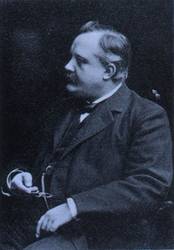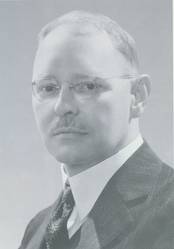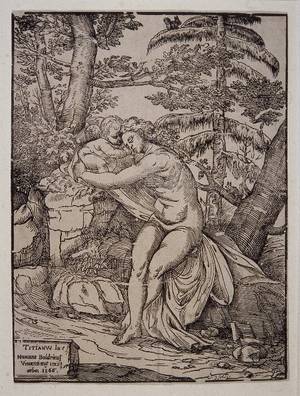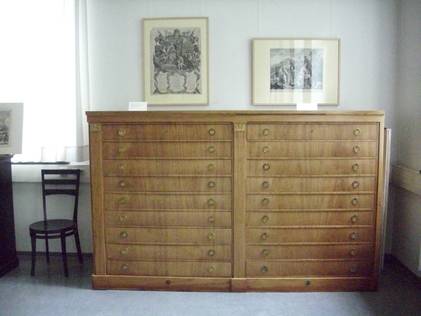History of the Prints and Drawings Collection
 Since its foundation in 1897 the Prints and Drawings Collection serves as an art collection for the practice-oriented education of students, but also for the interested public. During the semester, small thematic exhibitions from the collection are regularly shown in the study hall. Works by contemporary artists are presented there as well. Parts of the collection can also be presented by appointment – even for groups up to 20 people.
Since its foundation in 1897 the Prints and Drawings Collection serves as an art collection for the practice-oriented education of students, but also for the interested public. During the semester, small thematic exhibitions from the collection are regularly shown in the study hall. Works by contemporary artists are presented there as well. Parts of the collection can also be presented by appointment – even for groups up to 20 people.
The foundation of the Prints and Drawings Collection is closely linked to the first professor of Art History at the University of Tübingen, Konrad Lange (1855 – 1925). He laid the foundation of the collection with European prints from the 16th to 19th century which were purchased from the former Königliches Kupferstichkabinett Stuttgart. Notable private collections like the legacy of Baron Otto von Breitschwert (1910), the Foundation Max Kade, New York (1965) or the takeover of the collection of Hedwig and Gustav Adolf Rieth (1987 and 1990/91) enlarged the collection as well as the aquisition and donations of selected sheets. The Tübinger Kunsthistorische Gesellschaft e.V. (friends association) regularly contributes to the expansion of the collection with works of art. As a specialty the complete inventory of etchings of the “Sprayer of Zurich”, Harald Naegeli, was given as a donation by the artist to the Prints and Drawings Collection of the Institute of Art History in 1998.
The collection is located in the old building of the University library, an early building by the Stuttgarter architect Paul Bonatz (1910). Parts of the collection are still kept in the ancient cabinets of the Königliches Kupferstichkabinett Stuttgart. These cabinets were made by the ebenist Johannes Klinckerfuß in 1810.

Konrad Lange (1855-1925)

Max Kade (1882-1967)

Nicolo Boldrini (active in Venice in 1566): Venus, following Tizian, wood carving

Cabinet in the Prints and Drawings Collection from 1810
